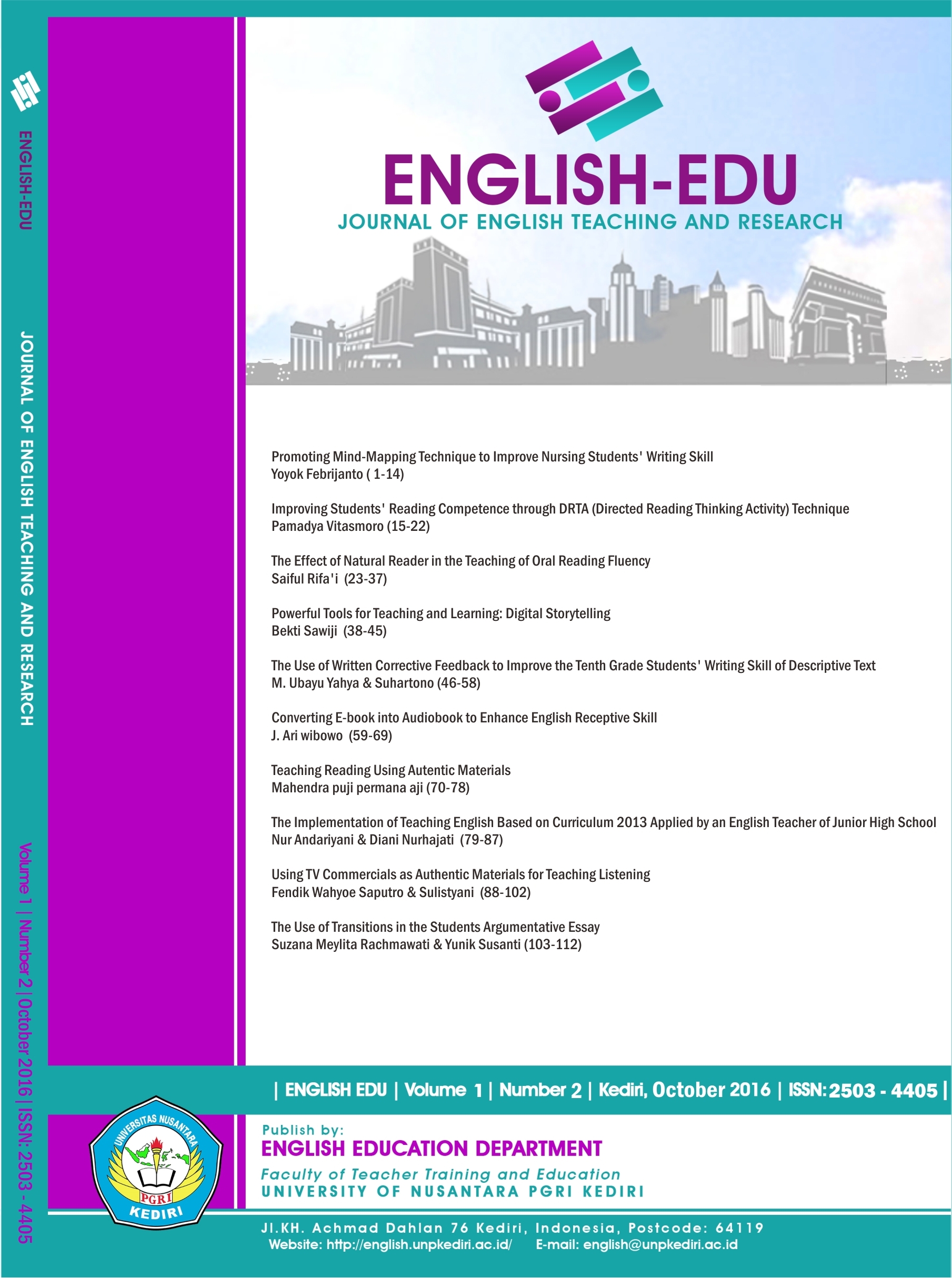USING TV COMMERCIALS AS AUTHENTIC MATERIALS FOR TEACHING LISTENING
DOI:
https://doi.org/10.29407/jetar.v1i2.481Abstract
The use of authentic materials is important in teaching EFL students due to its real life English language usage. For this reason, this article discusses the way how to use TV commercials as an authentic materials in teaching one of the skills in English, that is listening. This article serves several materials, activities, and steps of how we implement the usage of TV commercials as authentic materials to improve listening ablity of the students. These materials, activities and steps is aimed to encourage and to give the real life usage of English, so the students can implement it in their daily communication abroad. These strategies was collected through several articles reading and experts in EFL teaching. It is known that both EFL teachers and students have much to gain from TV commercials. TV commercials have visual, verbal and written images, interesting vocabulary and cultural features, and help students to improve their listening skills and to speak English in a more natural way.
Keywords: TV commercials, authentic materials, teaching listening
Downloads
Downloads
Published
Issue
Section
License
Authors who publish with this journal agree to the following terms:
- Copyright on any article is retained by the author(s).
- The author grants the journal, the right of first publication with the work simultaneously licensed under a Creative Commons Attribution License that allows others to share the work with an acknowledgment of the work’s authorship and initial publication in this journal.
- Authors are able to enter into separate, additional contractual arrangements for the non-exclusive distribution of the journal’s published version of the work (e.g., post it to an institutional repository or publish it in a book), with an acknowledgment of its initial publication in this journal.
- Authors are permitted and encouraged to post their work online (e.g., in institutional repositories or on their website) prior to and during the submission process, as it can lead to productive exchanges, as well as earlier and greater citation of published work.
- The article and any associated published material is distributed under the Creative Commons Attribution-ShareAlike 4.0 International License








 Article template
Article template



